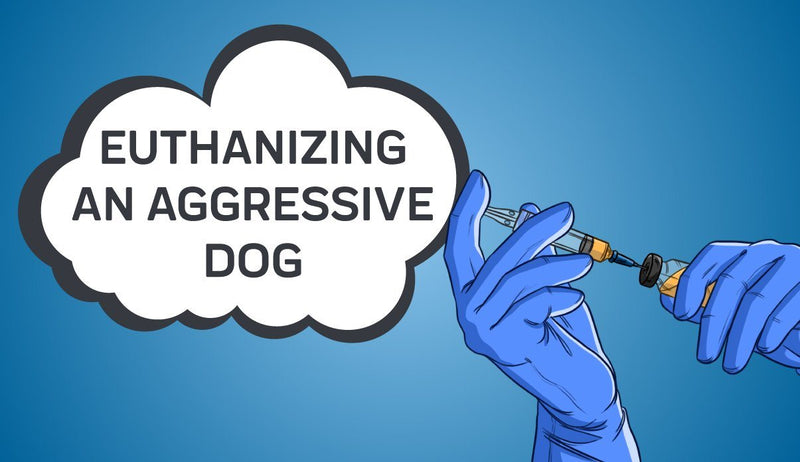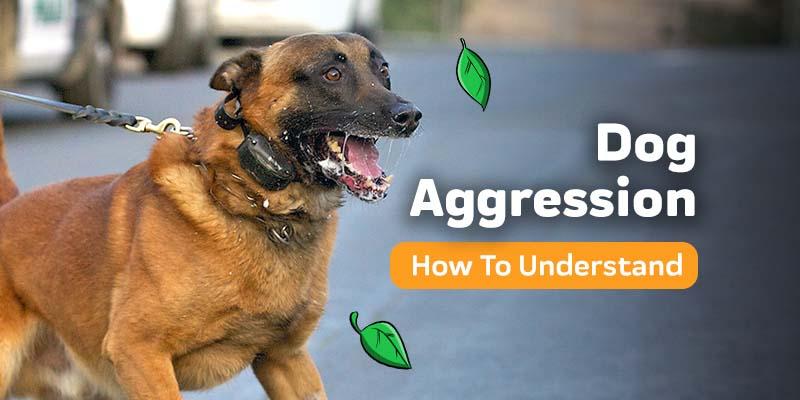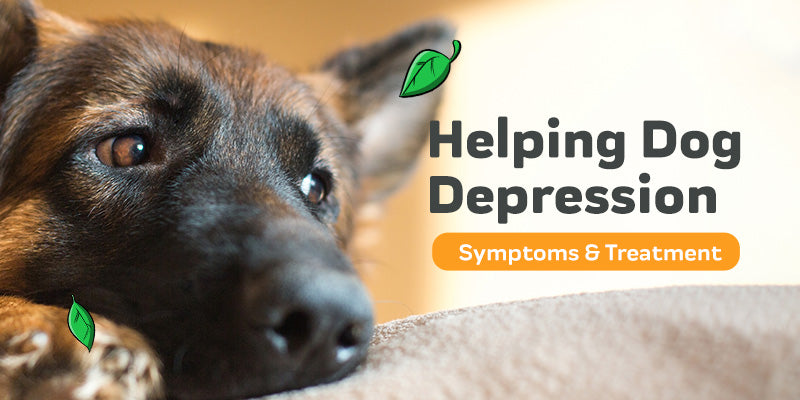Here, Innovet Pet Products shares an account of one person’s experience with euthanizing an aggressive dog and why sometimes it is the best option.
- If A Dog Bites Should It Be Put Down?
- Will A Vet Euthanize An Aggressive Dog?
- I Had To Put My Dog Down For Being Aggressive
- Putting Down An Aggressive Dog
- Will A Vet Put Down An Aggressive Dog?
- Putting A Dog Down For Aggressive Behavior
- Update On Should I Euthanize My Dog For Biting?
- euthanized my dog
- English setter
- aggression in dogs
- behavioral problems
- dog bites
- IBS
- CBD Oil
- CBD Effects on Aggression
- CBD Helps Reduces Anxiety
- CBD and Anxiety
- Canine Body Language
- What Dog Growls Express
1. If A Dog Bites Should It Be Put Down?
2. Will A Vet Euthanize An Aggressive Dog?
3. I Had To Put My Dog Down For Being Aggressive
4. Putting Down An Aggressive Dog
5. Will A Vet Put Down An Aggressive Dog?
7. Update On Should I Euthanize My Dog For Biting?
If A Dog Bites Should It Be Put Down?
As my dog jumped at my face, I fell downstairs. I saw my dog watch me travel up the stairs at 12:30 in the morning. He seemed okay, yet one minute later he lunged for my face. I pulled myself back and fell down some steep stairs. My head wound up in the bottom part of an end table. Had I bumped my head on the top I might’ve broken my neck
Or even died.
Will A Vet Euthanize An Aggressive Dog?
Will
I Had To Put My Dog Down For Being Aggressive
According to my vet, she said if my dog was healthy, I would not be here this morning. I knew she was right. Ending his life, without a doubt, was the proper thing to do. This option - and it did not feel like an option, yet something I had to do – isn’t a solution everyone would take. But we’d all be a lot safer if more folks euthanized canines whose behavior can’t be improved after expert help.
I’d been working with my dog Dodger for months on his aggressive behavior. About 3 months before that fateful evening, my 9-year-old, 42-pound English setter bit me 3 times in 2 seconds; he left 6 wounds on my forearm underneath a sweatshirt after I pet him on his back. I was shocked; however, I knew what I had to do.
He had a complete medical work up and went on an anti-anxiety medicine called clomipramine after no physical cause for the behavior change was discovered. I called a certified trainer in, a lady very experienced in aggression in dogs. When she came, she said, "I can’t guarantee that he will not bite again."
Dodger seemed to get better and even though he had snapped at me a couple of times he had not broken my skin. I believed his bite inhibition had returned, and that so long as I did not scare him, it’d be alright.
I was wrong.
Being attacked by one you love is a slam to your gut. For a brief time, rational thought flies out the window. It happens so fast. Your heart pounds and your body shakes as the fight-or-flight response gets set off. I cried that evening as I applied ice to my face, wishing I could ice my whole body. Being attacked by my very own dog was a traumatizing experience, a betrayal of trust by my beloved dog who always had slept on my bed beside me.
Dodger was so anxious as he arrived 5 years ago that he wore down a path in our back yard within 3 days. He always had been snappy when scared. Exercise never was lacking,
Putting Down An Aggressive Dog
When I began to talk to others about him, I recognized that many friends euthanized aggressive dogs, which includes one who has a dog training school. Vets too: Years ago, Doctor Teri Oursler brought a 3-year-old beagle home. Each time he’d gotten in his previous owner's way, she kicked at him then she kicked at him as she shoved him inside his kennel. The doctor consulted with vet behaviorists who said to her that she couldn’t cure Sherman the Beagle, and all she could do was improve the behavior and try not to place him in any situation in which he might cause harm. Around 3 months later, the beagle attacked the foot of her 8-year-old son, leaving 8 puncture wounds. It was the 4th bite and the most aggressive. Sherman had to be euthanized.
Dr. Oursler, 8 years later, still struggles with her guilt of putting the beagle's needs above her children’s safety.
She said she would never forget the noises of his attack and her son screaming. He taught her that some dogs are wired incorrectly and can’t be fixed, as with some humans. Imagine Ted Bundy. The beagle taught her that euthanasia of a seriously anxious dog is alleviation from suffering as much as euthanasia for a physical issue is alleviation
Will A Vet Put Down An Aggressive Dog?
Some aggressive canines may be helped by a veterinary behaviorist or a good trainer, and that’s where human beings ought to begin working with the dog, as obtaining professional assistance may make all the difference. However, I now strongly believe that some pets – such as Dodger – are not correctly wired, and no quantity of medication or training or can repair broken wiring.
From where I am sitting, too many folks make excuses for repeated offenses, no matter if the cause is a medical one or otherwise, instead of addressing the issue even if
Putting A Dog Down For Aggressive Behavior
What I recognized later, through that grief, was that I had been strolling on eggshells around my dog and that relief was a huge part of the emotional response. Mainly, it was sadness. Within the initial couple of days rage was a big part of it: that my dog experienced anxiety, because I could’ve broken my neck, because I’ll never see his graceful jog.
I struggle with my dog’s unhappiness despite all of my efforts, and I wonder if or when it’ll ever end.
In that sadness, I turned to the human therapist and vet, Dr. Michele Gaspar.
Dr. Gaspar says that there are some pets that are mentally ill, either because of their development, trauma, or genetics. She appreciates the effort people place into trying to understand them, yet some dogs never are normal. She does not think medicine would’ve helped Dodger. Escalating behavior isn’t good in any dog species. Dogs ought to be mentally strong enough not to become startled in a home environment.
Dr. Gaspar adds that she is more and more intolerant of cats and dogs that have behavioral problems; however, it seems that as a society we attempt to overcome those problems in animals more than we do with human beings.
At least I now have the comfort that he’ll never grow worse. Dodger will not ever bite anybody else, just because he cannot. Kids may be permitted in my home again, and I will not ever be sued because he injured someone. Nor will Dodger get turned away by my vet clinic because he bites the clinical staff. Those are things I remind myself when I am trying to get better. They aren’t small comforts.
The scary stats for dog bites account for a lot of hateful and fearful feelings concerning dogs. The most common dog-bite victims, bitten children, frequently grow to be frightened of dogs. Bites impact humans working with canines: pet sitters and boarding kennel operators, rescue group volunteers, trainers, as well as vet staff. Vets and vet technicians get most of these bites, impacting how they feel about the profession, as well as future clients.
According to Dr. Beth Ruby, this was her reaction to an aggressive patient upon a Veterinary Information Network message board:
In all my years working in a vet clinic I’ve never been bitten in my face (before today). It caused a fear I do not believe I’ve ever dealt with. The lack of warning from the animal left me insecure. I’ve been scratched and bitten a lot in the past 25 years, yet never have I felt so vulnerable and small as I did today. Seeing these teeth coming at my face and having no control created an emotional experience you cannot describe or imagine.
You cannot describe or imagine it, but if you had lived it… those words ring true.
That day almost 3 years ago changed the way Doctor Ruby practices. The doctor became more cautious during her examinations. She now keeps her face and head at a safer distance, just approaches dogs from the side in which she has plenty of chance to quickly back off and makes use of muzzles more frequently.
What I’ve never understood, even before my dog Dodger entered my life, was how humans could keep animals who bit humans or other pets repeatedly and simply live with it. That is unacceptable. While pet owners might accept it, it’s immoral for them to accept it for anybody else. Also, I think it’s wrong to turn a dog over to an animal rescue or shelter, and worse yet, not disclose the facts about the dog’s aggressive behavior. There is enough bad stuff within the world that human beings can’t control; sending along an animal that will injure somebody is a moral failing.
Imagine what you might feel after your aggressive pup mauled a child’s face. Imagine what you’d feel if a stranger’s pup attacked you or your toddler. Wouldn’t you forever wonder, why his owner did not do something about the pup’s escalating behavior when they could have?
I do not need to ever wonder about this anymore. As I continually sift through and address
Update On Should I Euthanize My Dog For Biting?
It has been a long time since I felt that aching, stabbing grief which accompanied my determination to euthanize my dog. Time heals many wounds, and in this instance it has. My heart swells up with more joy than I ever thought possible as I see a photograph of him. I now have the ability to think about him without having to fall apart, without regrets, without tears, even though I never forget that I’ve suffered this misery; it was among the worst events of my life.
I still dream of Dodger’s graceful jogging through acres of green, lush land, as if he was in low gear yet thinking about switching to high gear: his loping just hinted at the speed he was capable of pulling out at any minute. Dodger was born to run races, and he liked running more than anything, even me. I remember the day he took a swim in a silt pond and exited looking like the Creature from the Black Lagoon, or his great times with mud.
These are the memories I now enjoy. When I remember the time he bit my forearm 3 times in 3 seconds, and the 6 little puncture wounds he left, my tummy does not clench. I do not even have much of an emotional response to the idea of being lunged at before falling down a steep stairwell, which might’ve killed me. It is more along the lines of "Yes, that was horrible, one of the worst events of my life. Is there more coffee?”
No successor followed him, and another pup is not even in the picture. My pet Zita is as happy as a pig in mud. My kitty Dickens still experiences stress-induced bouts with colitis, the most recent just 2 weeks ago when I came home smelling of a litter of kittens; Dickens acted out, and around 24 hours later he experienced a raging fit of diarrhea. He probably has IBS, caused by stress instead of inflammation, and I still believe it is all associated with how afraid the cat was of Dodger, a beast 4 times his size with a penchant for bowling over felines. There’ll be no new animals for me while my cat is alive.
If it weren’t for Dickens, I’d be emotionally prepared for another canine. It is simply not meant to be right now.
I am fine with that.
Here’s the best part: I no longer feel as if I cannot trust myself to choose another dog. When my cat is no longer here, I’ll invest in another dog.
That is my personal side. How I feel about my public side - this post - is different. I do not know how to explain it. Although writing about my experience is how I handle life, the explosion of comments which still arrive on a weekly basis 3 years later is breathtaking, yet formidable. For quite some time the level of new grief it brought about was hard, a little like salt on an open sore. However, that isn’t the case now.
In a way, for the ones of us who adore dogs who become aggressive, it tends to come down to a deep adoration of a pup who behaves fine most of the time, yet occasionally has this issue and it tends to be growing worse.
Here’s the hardest part: when folks couch the question if I believe they ought to euthanize their pet. Here's is my blanket reaction: each family is only responsible for that choice. Listen to the suggestion of somebody who actually has seen the animal: your vet or your vet behaviorist (while there aren’t any vet behaviorists in a few geographic regions, in this case they’re preferable).
Like many things in vet medicine, what may be done, what ought to be done, and what’s reasonable to do are moving targets, as well as dependent upon factors like owner finances, local resources, family dynamic/size, degree/frequency of aggression, as well as size of dog.
What is okay for me might not be okay for someone else. The reasons to euthanize or not euthanize are a moving target, and very little about this subject is clear cut. It is a subject that constitutes a hundred shades of grey; not much black and white. I think that if your pet has inflicted enough damage to send somebody to the emergency room, or has mauled or even killed another pooch, it is definitely time to act. But that is me. I am more than lucky I did not break my neck on that topple down the stairs after Dodger lunged at my face, and it’s sheer grace that I rose and strolled away with only a limp and bruises to show for it.
Here’s my wish for every one of us: the love of non-aggressive dogs without the need for walking on eggshells. May that love be with all of us, and if not with this pup, then another dog. When asking yourself, “should I put my dog down for biting?” remember, if your dog is experiencing aggression, find out how CBD Oil can help calm an aggressive dog.
Sources:

Thanks for stopping by!
P.S. We Love You!
Sincerely,
The Innovet Team
Please do not ask for emergency or specific medical questions about your pets in the comments. Innovet Pet Products is unable to provide you with specific medical advice or counseling. A detailed physical exam, patient history, and an established veterinarian are required to provide specific medical advice. If you are worried that your pet requires emergency attention or if you have specific medical questions related to your pet’s current or chronic health conditions, please contact or visit your local/preferred veterinarian, an animal-specific poison control hotline, or your local emergency veterinary care center.
Please share your experiences and stories, your opinions and feedback about this blog, or what you've learned that you'd like to share with others.















